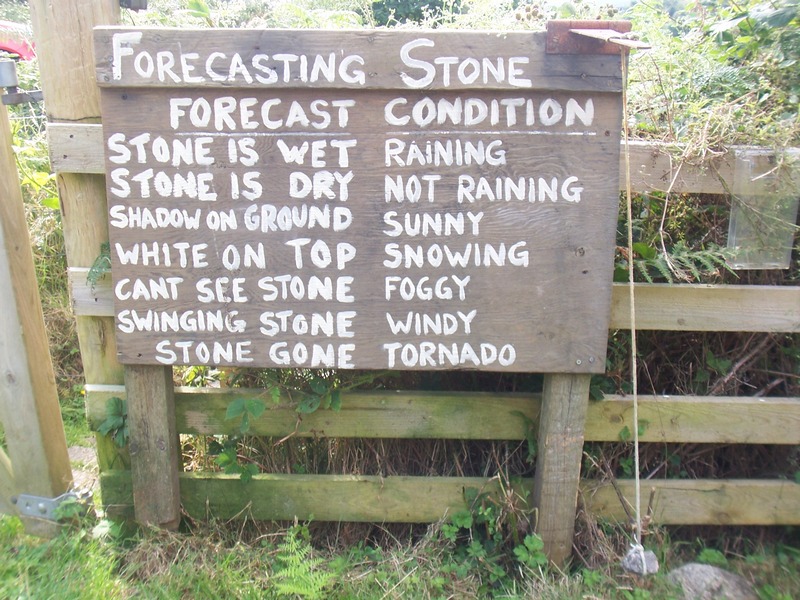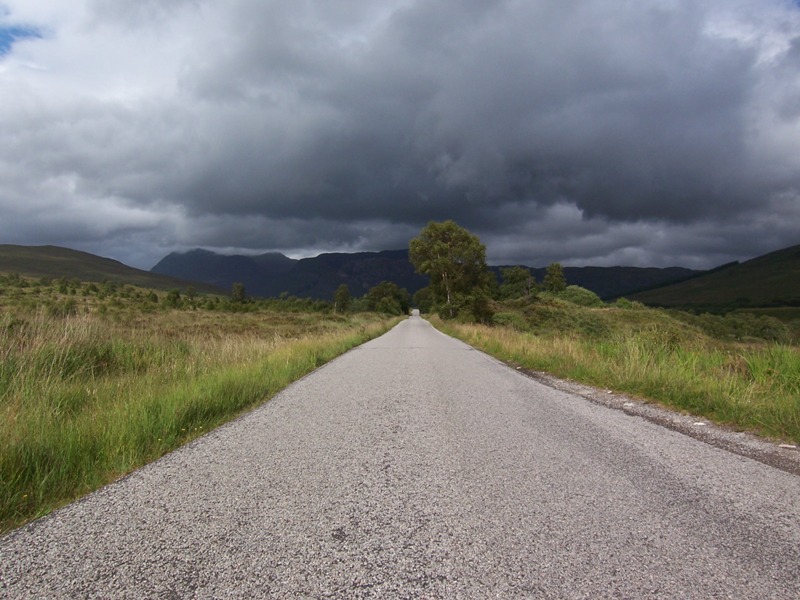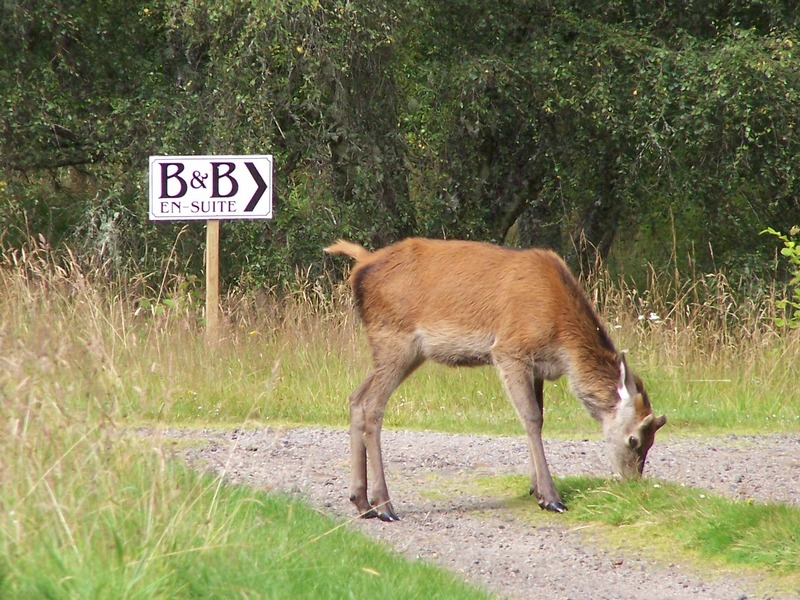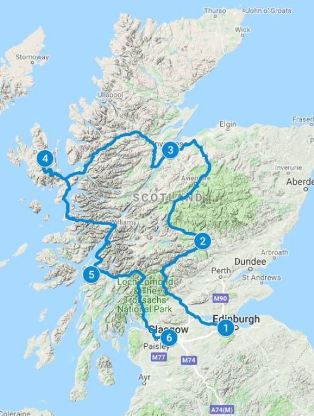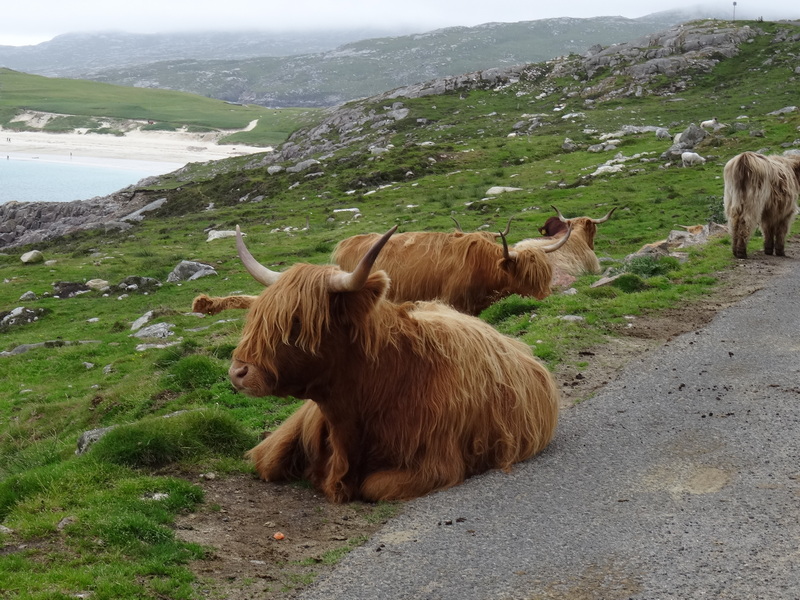Travels Tips for American Tourists in Scotland
This year, 2025, marks the 20th Anniversary of us quitting our jobs to set up Secret Scotland.
Over the last 20 years, we’ve make good friends from all over the world and helped them to plan their holidays in Scotland. The majority of our clients have come from America, so we’ve learned about some of the often subtle but important differences between life in Scotland and America that can cause confusion when US Citizens are planning a Scotland Tour.
These Travel Tips are a compilation of answers to the most frequently asked questions that have been posed to us by our American friends over the last 2 decades.
Traveling to Scotland:
When is the Best time to Visit?
To get the best combination of long hours of daylight, dry(ish) weather, not too many tourists, and open tourist attractions, we recommend that you look at visiting between late April and June.
July / August are the busiest months in Scotland.
When should I visit to avoid Midges?
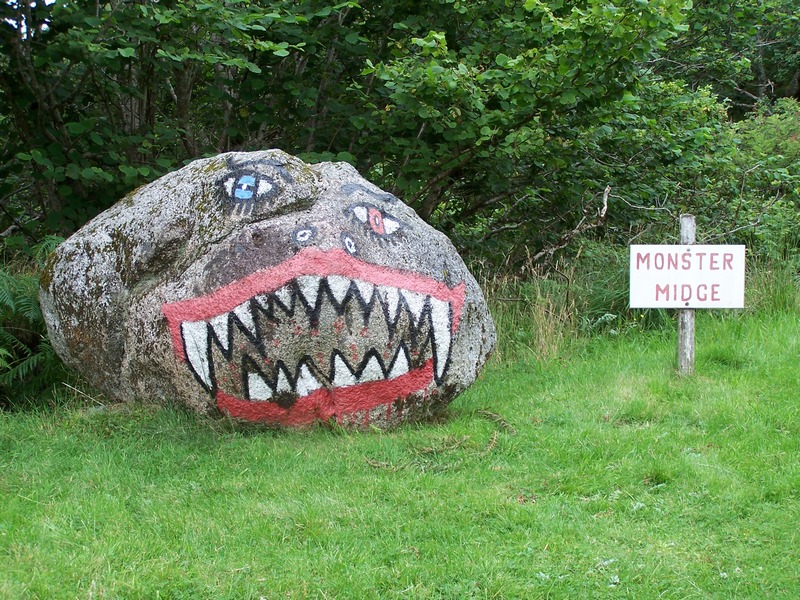
Midge season in Scotland is during the warmest months, so they are most active from June to September. But avoiding midges is also about weather conditions on the day and where you go. Fortunately, they can’t fly if there is a wind speed above ~5 mph, and most coastal parts of Scotland have enough wind to keep the wee blighters grounded most of the time. So beaches are generally safe.
Midges also don’t like too much sunshine and are most active on overcast days and around shady places (e.g. woodlands). Much like Vampires, they tend to be most active just after dusk when their feeding frenzy begins!
They also like to breed in boggy places. So hanging around a moor at dusk on a still night is just asking for trouble. That said, we tour Scotland all year round, hike up mountains, and cross moors to visit remote places, but we never bother with midge nets or insect repellant. I guess we’re just not that tasty to them.
What Should I Pack?
It’s no great secret that the weather in Scotland is very changeable.
You can experience four seasons in a day, so the secret is to wear layers. Pack T-shirts, a sweatshirt, and something waterproof that you can roll up small to keep in a rucksack. Kagols are good, but our climate can be warm and humid so a waterproof layer that “breathes” is always an advantage. And do pack some suntan lotion (it might be needed), and maybe some lip balm if you are coming in winter when there might be cold winds.
If you plan to do some hiking, you will need waterproof shoes and, preferably ones that go above the ankle. When I used to build paths for the NTS, we deliberately constructed deep muddy sections at the start to deter folk with inappropriate footwear from following paths that needed stout footwear. We called them “Grannie Traps”.
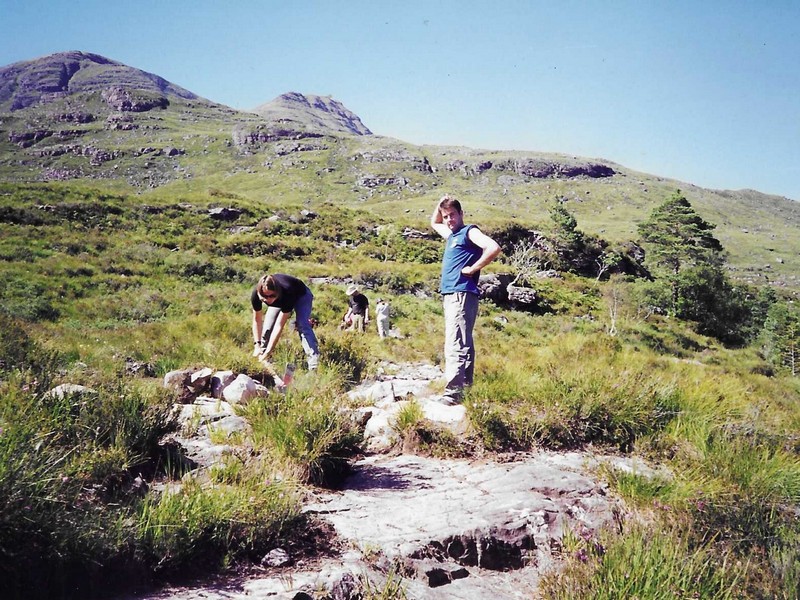
Do I need a Travel Permit?
As with any overseas visit, your passport needs to be valid for the duration of your stay.
New legislation came into effect on January 8, 2025, so now all U.S. citizens traveling to Scotland for tourism for 6 months or less will require an Electronic Travel Authorization (ETA) prior to travel. You can apply for an ETA at this website.
Which Airport should I arrive at?
Scotland has 3 main airports that get most of the International flights; Edinburgh, Glasgow and Inverness.
There are only 48 miles between Glasgow Airport and Edinburgh Airport, and the M8 motorway runs between them. So if you are starting your trip with a visit to Glasgow or Edinburgh, it doesn’t matter too much which of these airports you land at.
You can transfer from Glasgow to Edinburgh by bus or train. Click Here to see details of the bus from Edinburgh Airport to Glasgow city centre. However, There is no direct link from Glasgow Airport to Edinburgh city centre, but you can get a bus from the airport to Glasgow Queen Street station and then take the train to Edinburgh.
If you want to launch into a tour of the Scottish Highlands, then Inverness Airport is a good arrival point. The airport is small but has a bus link to Inverness city centre, and Inverness has a choice of Car Rental companies, but more on that subject later.
Should I take a train from England to Scotland?
If you are arriving in London and plan to stay there for a few days before traveling up to Scotland, the Caledonian Sleeper train is well worth considering. It’s not a cheap option, but you are combining accommodation with travel, and it makes good use of your time.
The Sleeper Train departs London Euston at 23:45 and arrives in Edinburgh at 07:30. Which means you have a full day ahead of you to explore Edinburgh. And there’s the bonus that you step out of Edinburgh Waverley Street Station into the heart of Edinburgh with the castle towering above you. It’s a memorable way to arrive in the Capital.
Traveling around Scotland:
What’s the best way to see Scotland?
If you want to explore Scotland’s wild and beautiful country and make the most of your time, you need to tour by car.
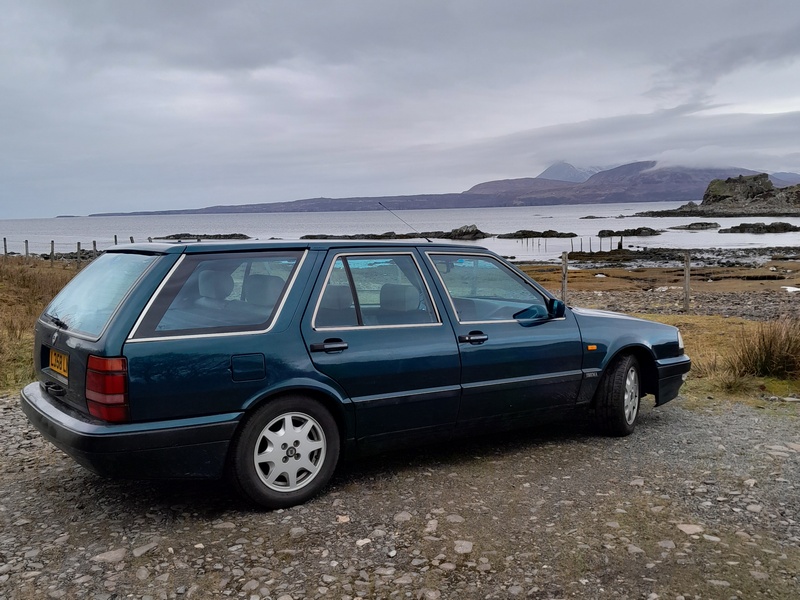
If you plan to tour using a mix of trains and buses, you can get around the main cities and towns, but you will be very restricted with what you can visit in rural areas. If you just plan to explore around Edinburgh and Glasgow, then the public transport system will cover your needs. But, exploring the Highlands requires the freedom and flexibility of car travel.
IMPORTANT TIP: If you buy a Secret Scotland tour plan, you will receive a discount code that saves you 10% on the cost of car hire with Arnold Clark Rental. The details of this deal are on our website.
Will I cope with Single Track Roads?
This is a concern for a lot of people, but it doesn’t need to be so long as you drive sensibly and with courtesy to other road users. For sure, Scottish roads are narrower than you will be used to in most of the US, but our cars are smaller too.
The key thing to remember is that you always keep left. This is important to remember when you have an oncoming car and you are approaching a passing place that’s on your right. Your instinct might be to pull into the passing place on the right to let the other car through, but the other driver will be expecting to use the passing place to drive around you. So, just stop on the left opposite the passing place.
The other really important thing is to use the passing places to let people overtake you. You might think that 20 mph is as fast as anyone could drive on a single track, but a local will do a lot more than that. Keep checking your rear-view mirror, and pull over at the next passing pace to let following cars through. This will make you a lot more popular with the locals.
Single-track roads are all about cooperation and being courteous to each other. It’s a sociable way of driving, much like walking down a pavement (sidewalk) and nodding “hello” to strangers. You might even start to enjoy the experience.
Will most places take Card payments?
Yes, payment by card is the norm in Scotland, and it is rare to find places that won’t offer card payment. If you are paying using your cards “Contactless” facility, the limit is £100 for any one transaction.
If you are visiting small craft shops in rural areas, or attending a Farmers’ Market, you may find that payment by cash is required. So, it would be wise to carry some cash for these eventualities.
IMPORTANT TIP - Before you depart for Scotland, notify your bank that you are going to be using your Cards in Scotland. This is just a precaution so that they don’t block transactions that might appear as irregular activity on your account.
Hiring a Car
Where should I collect my hire car?
If you are spending time in Edinburgh or Glasgow before starting your driving tour, then we advise that you leave the collection of your hire car until you are about to leave the city. The public transport system in these cities is very good and parking charges in the city centres are expensive.
We recommend that you collect your hire car at the airport as this will save you from trying to navigate city streets whilst you are also familiarising yourself with a new car. The airports at Edinburgh and Glasgow are located close to major motorways which are less stressful to drive when getting acquainted with driving on the left. Arnold Clark Rental (our recommended supplier) has pick-up locations near Edinburgh and Glasgow airports. They operate a shuttle bus that takes you to & from the terminal building and their depots.
Collecting a Car Hire in the Highlands is a bit more complicated as most of the Car Hire businesses in this region are small local businesses that don’t offer a vehicle drop-off at a different location to the pick-up.
Inverness is served by several of the larger Car Rental brands (e.g Arnold Cark, Hertz, Enterprise, Europcar). So, you can collect here and then drop off the car elsewhere for an extra charge.
Which Car Rental company do you recommend?
Arnold Clark Rental is our recommended company for car hire. They have the largest garage network in Scotland, our customers have always given good feedback on their service, and we have a deal that gives our clients a 10% saving with them. Click here for details of how to save money on your car hire costs.
What Paperwork do I Require to rent a car?
American tourists need to present a valid US driving licence and their Passport. In addition, you need to provide a valid credit or debit card to leave an imprint for any additional costs. The card must be physically shown at the time you collect your hire car
Most Car Hire companies include a basic level of insurance in the prices quoted on their website, but if you are nervous about driving on the left, it would be advisable to pay for the extra cover. Just make sure to read the small print about what it covers you for, such as “kerbing” wheel rims.
Can I Book an Automatic?
You can, but Automatics are not a popular option in Scotland so they cost a bit more than a manual, and it is wise to book your hire car early if you need to secure an automatic car.
Is it easy to find places to tank up?
You need to be more careful about refueling stops in the Highlands as villages can be several miles apart, but our Tour plans highlight the remote places that have petrol / gas Stations, so you can plan for refueling stops.
Fuel costs more in rural areas, so you can save a few £’s by tanking up in the larger Highland towns i.e. Inverness, Fort William and Oban
IMPORTANT TIP - At Scottish petrol pumps the colour coding of hoses and nozzles is Green for Unleaded and Black forDiesel.
Will I be able to find Electric Charging Points?
If you plan to hire an electric car, you can find details on the availability of Charging Points on this website: https://chargeplacescotland.org/
IMPORTANT TIP - When booking your hire car, if you don’t specify a petrol driven automatic car, you might be offered an Electric Car.
Accommodation:
B&Bs, Guesthouses, and Hotels… what’s the difference?
B&Bs in Scotland have to attain a Short Term Let Licence to trade, so they are held to a set of standards that ensure your safety. Consequently, Bed & Breakfasts in Scotland are professionally run operations and it is not a case of someone simply putting up a sign and renting out a room in their house. B&Bs typically only have 3 rooms and are restricted in the number of guests they can take by the terms of their Short Term Let Licence.
Rooms for guests are typically separate from the owners' living areas, and it is more or less standard that you will get your own en-suite (attached bathroom) facilities or a private bathroom adjacent to your room.
As the name implies, Breakfast is normally provided, but in recent years we have seen a trend for B&Bs to offer breakfast as an option that you can pay extra for. It is also becoming more common for B&Bs to only offer a “Continental” breakfast instead of a cooked breakfast, or to provide you with a fridge stocked with milk, yoghurts, fresh fruit, fruit juice, and cereals so that you can have a self serve breakfast in your room.
Guesthouses offer a similar service to B&B’s, but they are larger establishments with 4 plus rooms, and you might not meet the owner as they may have staff to assist with the running of the business. If you like the idea of meeting and chatting with your host, then the B&B option may suit you best.
B&Bs tend to offer the best value for money, but Tariffs have risen considerably in the last 20 years. Busy tourist destinations like Skye have capitalised on the demand, so you can pay upwards of £150 for a room sleeping 2 people on Skye in peak season.
Hotels are what you would expect and will have a hotel restaurant and bar. In the Highlands, there is a shortage of young people, so most Highland hotels recruit seasonal staff from abroad. Consequently, staying in a hotel might mean that you don’t get to interact with local people.
I need a big bed, will I be able to get a Kingsize?
The size categories of beds and terminology of room types can cause confusion. In America, you do everything bigger and that applies to beds too! An American King bed is equivalent to our Super King. Our bed sizes are as follows:
- Single = 90 cm x 190 cm
- Small Double = 120 cm x 190 cm
- Standard Double = 135 cm x 190 cm
- King = 150 cm x 200 cm
- Super King = 180 cm x 200 cm
- Emperor = 200 cm x 200 cm
A "Twin Room" means a room with 2 single beds, A "Double Room" means that you get one large bed that sleeps 2, but you need to check if that is King or Super King size of bed. A "Family Room" will typically have a double bed and one or moire singles.
Do I need to pre-book Accommodation?
We always recommend pre-booking accommodation. If you are traveling in Peak Season June - September, then it’s wise to book your accommodation 5 - 6 months in advance. You will still find places available later than that, but if you want to have a good choice of where to stay or you need to book for several people, you need to book early.
Another good reason for booking in advance is that looking for accommodation at the end of a day of touring is going to waste valuable time, and Highland communities are often scattered so you might end up somewhere quite remote without a restaurant nearby.
If you are planning to attend popular tourist events such as the Edinburgh Arts Festival (August) or Islay’s Whisky Festival (late May), you will find that accommodation books up fast around the dates of these events. So, for example, if you want to stay in the Braemar area during the Braemar Gathering, you need to look at booking local accommodation 10 - 12 months in advance!
Tourist Attractions
I’ve got a week in Scotland, what can I see?
Gosh, this is a BIG question, and there are so many ways to answer this as you can see by looking at the range of tours that we’ve designed for 7 days in Scotland.
If you are a first-time visitor to Scotland and want to cover all the places that you’ve probably read about your best option is our Classic Scotland tour plan. We explain how you could schedule this tour plan over a week in our Travel Tips section titled “7 days in Scotland - Itinerary Tips".
Do I need to pre-book visitor attractions?
The answer to this depends on the tourist attraction. In general, you don’t need to make reservations, but there are some notable exceptions. The Jacobite Steam train (AKA “Hogwarts Express”) books up very fast, and some whisky distilleries (e.g. Macallan & Balvenie) only offer a limited number of places on their tours & tastings, so they need to be pre-booked.
If you have a carefully planned schedule and know when you will be arriving at places, then it is wise to pre-book so that you can skip the queues. Some of the places that we recommend you to book a “visiting slot” at are Edinburgh Castle, Doune Castle, and Rosslyn Chapel.
Pre-booking tickets online can sometimes also save you money on the “Gate Price”. This applies to the following popular attractions: Edinburgh Castle, Stirling Castle, Loch Ness Visitor Centre, and Urquhart Castle.
Which Visitor Pass should I buy to Save Money on Admission Fees?
Historic Environment Scotland offers a 14-Day Explorer Pass that gives you access to more than 70 properties in summer. The prices for a 14 day Explorer pass in the Summer are £44 (Adult), £26 (Child), £35 (Concession). £88 (Family 2 Adults + 3 Children). Explorer Passes are ~10% cheaper in the Winter season.
If you plan to visit Edinburgh, Stirling and Urquhart castle, the 14 day Explorer Pass will save you ~£12 on the combined admission fees. And you can also visit lots of other castles for free. Check out teh Historic Scotland website to see all the properties that they cover.
IMPORTANT TIP: Historic Scotland limits the number of Explorer Passes sold, so you do need to buy them several weeks in advance of your trip to be sure that get one.
What are the touristy places to avoid?
If you don’t like crowds then avoid Edinburgh in August. Skye is also a place where you can expect to find congested car parks if you visit in peak summer months. The island is big enough that you will still find some quieter corners, but the famous Instagram spots will be mobbed. So, if you don’t like following "the Herd" you should avoid these places:
- Fairy Pools
- Fairy Glen
- Quiraing
- Old Man of Storr
- Neist Point
Other spots that are very popular and too busy for our liking are:
- Glenfinnan Viaduct - chaotic car parking around the times of train.
- Edinburgh Castle - always a busy place, so it's wise to pre-book tickets online so you can skip the queues at the ticket office.
- Dunnottar Castle - the car park is too small for volume of visitors.
- Doune Castle - “Outlander effect” means that it gets lots of coach parties.
What are the “Must See” places in Scotland?
It might surprise you, but we don’t have a “Must See” list. The magic of Scotland is something that you experience best when you are away from the crowds. For that reason, we don’t want to steer everyone to the same places. We are “Secret Scotland” after all.
Where can I see Highland Cows?
Highland Cows aren’t rare over here. You’ll see them all over the country, so you just need to keep your eyes open and you will see them. In fact, there’s a good chance that you’ll have to drive around them at some point as they wander freely and sit down wherever they want.
If you want to know more, we wrote an entire Blog dedicated to the subject of Hairy Highland Coos and where to find them.
Touring in the Highlands & Islands
Will I see the Highlands?
Something that we have found over the years is that most people seem to think the Highlands start north of Inverness, but this isn’t the case. The southern boundary of the Scottish Highlands is defined by a Geological fault line that runs through Scotland along a line that runs from Stonehaven on the east coast down to Dumbarton and the northern half of Arran on the west coast.
It’s a large area that constitutes about a third of the Scottish mainland.
Are shops open on Sundays?
Modern Scotland is a more secular society than you might expect, so shops, restaurants and tourist attractions are generally all open and trading as usual on Sunday, although they might open or close earlier.
The notable exception to this rule is the Western Isles (Lewis, Harris, Uist etc). The “Sabbath” is still observed in most parts of teh Western Isles and there aren’t many places open on a Sunday. It’s only recently that the main supermarket in Stornoway started to open on Sundays and this was controversial.
How long should I spend on the Isle of XXXX?
This is something that we’ve covered in detail already in our “Travel Tips” guidance for “Touring Scottish Islands by Car”
As a general rule, you need to allow at least 2 nights for an Island stay, but there are some Islands that can be done as a day trip visit:
- Bute - A feasible day trip from Glasgow by taking the train to Wemyss Bay
- Cumbrae - A feasible day trip from Glasgow by taking the train to Largs
- Easdale - to the south of Oban and accessed via the Isle of Seil.
- Luing - to the south of Oban and accessed via the Isle of Seil.
- Kerrera - easily accessed from Oban Lismore - easily accessed from Oban
- Mull / Iona - day trip excursions are available from Oban
- Gigha - accessed from the Mull of Kintyre
This is a summary of the common questions that we get asked, but we have also written advice on several other topics and I've linked to these below:

